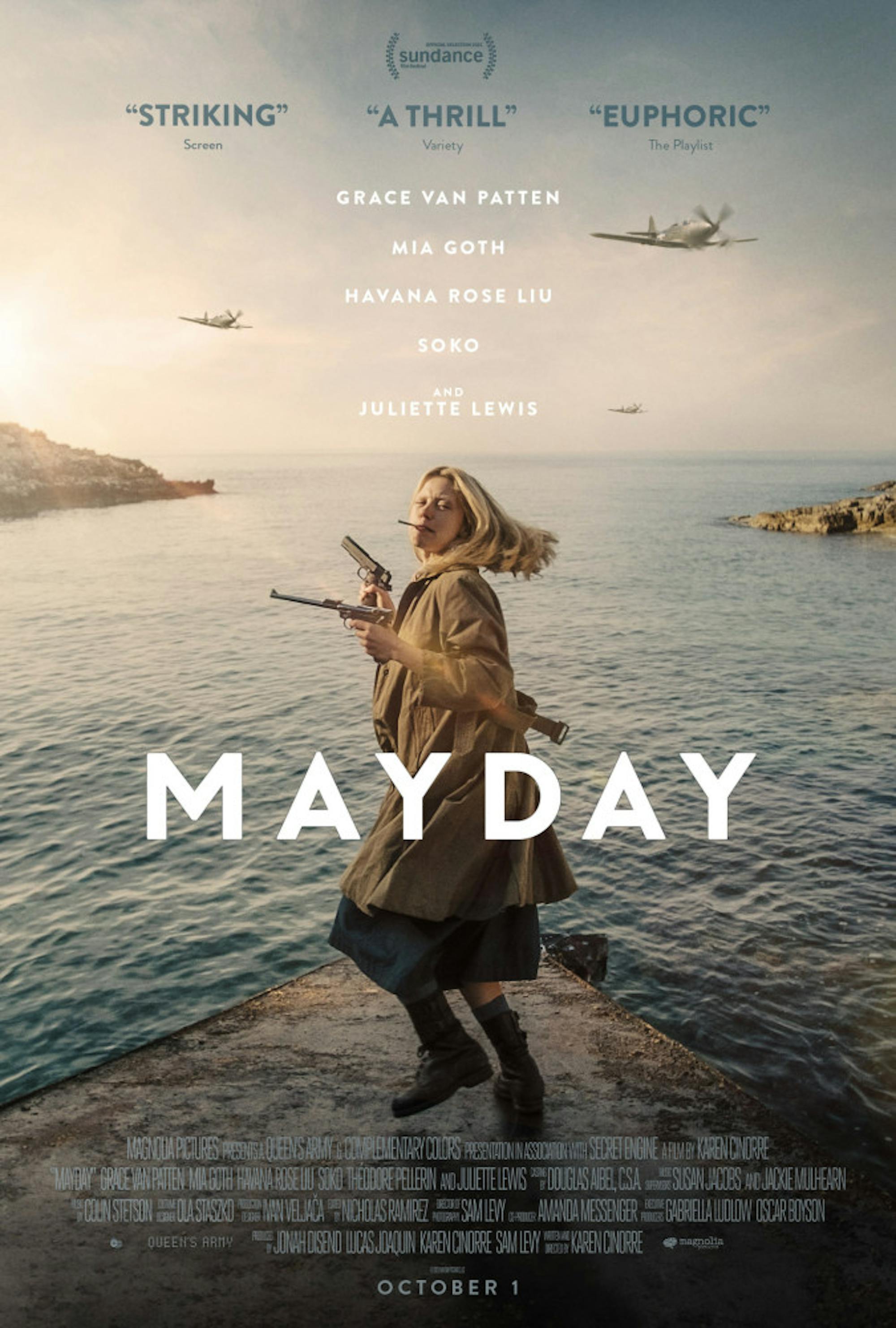"Mayday" (2021), director Karen Cinnore’s dreamy new steampunked-up feminist escapist fantasy, follows main character Ana (Grace Van Patten) as she stumbles into a chaotic world of female rebellion and redemption. While the film creates an alternate land to which our protagonist can run (or swim), one that is clearly meant to empower and strengthen the protagonist, the film is somehow hollow at its core, as themes of power and control corrupt the freedom, connection, unity and escapism it is trying so hard to portray. While largely entertaining and emotive, the film undermines its message for the sake of plot and narrative foils, a move which greatly wounds the final production.
The film opens with a glimpse into Ana’s life within the reality of our world; working as a waitresscatering for a wedding at which she is accosted by her male boss. In a moment of red-washed fear and rage, Ana escapes through an industrial sized oven into the world of the movie: a beautiful, weapon-laden island surrounded by a crashing, bright blue ocean. There, she meets a group of girls played by Mia Goth, Havana Rose Liu and Soko, who, following similar experiences with men in their now far-away world, have banded together to fight against the men in this world who are locked in perpetual war. The story is a coming-of-age of sorts, where the female characters achieve higher levels of self-awareness and mental fortitude. Free and natural in this new world, Ana is taught how to survive and fight in order to join the ranks of the four-girl insurgency. The group’s play at soldier life is filled with freeing connection and fun in the natural, anti-modern world, and the opening emphasis on connection and identification with each other is a nice and simple story of friendship and united healing.
The dream-world in which the girls fight is meant to emulate the deep-dug realities of, well, reality. Men are pushed to violence in a never-ending cycle, but here the women are given the chance to take the offensive before they ever need defending. There is no nuance, which itself is a sort of healing factor for our characters. When every man is shown to be outright violent and controlling, there is no room to question intentionality, and the group is able to punish the men for their faults without deliberation. It is an interesting premise. and the use of World-War-esque costuming and weaponry creates a sense that the story is placed outside of time, the mythology of the fight creating a reality-bent sort of realism.
The film struggles in the third act, however, when Goth’s Marsha begins to blur the lines between the unity and the power she feels from the violence itself. The sort of role reversal that comes when the violence goes overboard leaves a metallic taste of blood in the story’s mouth. It isn’t that the rape-revenge era indiscriminant violence against men in the name of previous violence leveled at women is flawed (in fact, it is often used very effectively and cathartically in films). However, the fractured moral discussions in the last act undermine this feeling of catharsis, and the fact that there is infighting between the women rather than a united front in the name of their female empowerment and healing is a disappointing end to the overall arc. Coming from a film where connection with other women is so central to their reclamation of power, pitting the two leading women against each other seems like a cheap ploy to create new conflict.
Cinematographically, the visuals of the film create an amazing backdrop that emulates the in-betweenness of the realistic anti-reality the girls are living in. The crispness of the island’s nature, paired with the machinic use of radios, weapons and pipe-laden submarines, works well. The lighting throughout the film, with airy and bright nature and starry night skies permeated by neon red lights, is a perfect visual pairing with the chaotic emotions on the screen.
Overall, the film is enjoyable even as it fails at its most central intentions. The conflicting narratives and themes make the film’s attempts at healing trauma and fighting for a new way of life crumble within this culture of violence for aesthetic purposes. An escape where we are powerful and where the villains are able to be seen as villains is a promising one, but to muddy the message and turn the protagonist against other women seems unfair and unfaithful to such a message.






